Dive Details
Location
Date
Sunday 14 October 2018
Time
10:37am - 12:17pm
Seas
Strong surge at times
Visibility
1 to 4 metres
Duration
100 minutes
Surface interval
Maximum depth
12.9 m
Average depth
9.7 m
Water temperature
17°C
Dive Profile from Garmin Descent Mk1
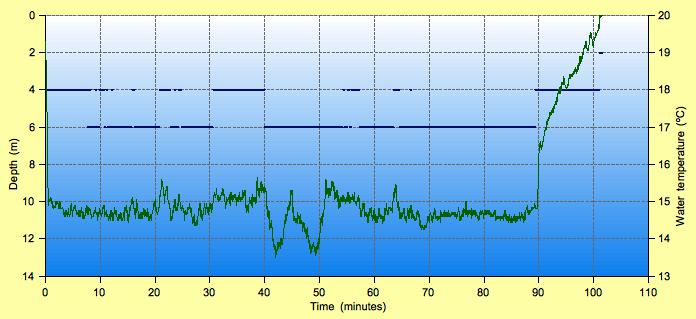
Tides at Botany Bay AEDT
Note that tides at dive site may vary from above location.
High
12:30am
1.29m
Low
6:10am
0.57m
High
12:41pm
1.59m
Low
7:24pm
0.51m
Details
After yesterday's surprisingly good conditions and a similar forecast for today, I thought that a dive at The Leap might be possible. Unfortunately, it was not to be. There was quite a large swell hitting The Steps and it was just too rough for an exit. I drove down to The Monument and looked on the eastern side of Sutherland Point but it was too rough there, too. Incidentally, I managed to see members of the "blue tide" that I had not seen before. These are organisms associated with bluebottles (AKA Portuguese man-o-war), Physalia spp.. I saw the colonial siphonophores: bluebottles, blue buttons (Porpita porpita), by-the-wind-sailors (Vellela vellela), as well as their predators, purple snails (Janthina janthia) and blue dragons (Glaucus spp.) which was pretty exciting. I would have to enter and exit from the beach.
I bumped into Aaron Lusted from Scubathlon at The Steps and then again at The Monument. He was leading two divers (Trevor and Diana) for a dive and I agreed to show him the best point to descend to find western end of the East-West Wall. We got in in front of the flagpoles and waded through the channel. We surface swam out. I had planned to drop down before the wall but as I was waiting for the other three, we had drifted to the exact drop point. When we were ready we descended right on to the start of the wall. The visibility was between 2 and 3 metres and there was some surge. The water temperature was around 18°C. Once I knew Aaron and the others were good I let them go on their way and I headed along the base of the wall behind them.
I headed east along the base of the wall and came on the basket star. I kept catching up to Aaron and the others and had to slow down. I was looking for the rock that John had described before the dive where Mandy had found a pair of pygmy pipehorses. I wasn't able to find it.
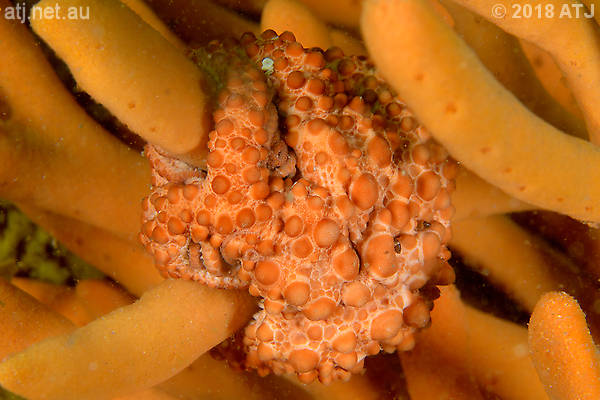
Basket star, Astrosierra amblyconus. 10.3 m.
I continued along the base of the wall to the rock I'd seen the juvenile red painted anglerfish. I looked all over the rock for it but I couldn't find it. Aaron pointed out an estuary catfish.
I swam on with Aaron and the others just in front of me. I came on the rock where I have seen the yellowish female White's seahorse. I looked around the area for her but could not find her.
I let Aaron and the others get ahead of me as I swam on to the area where "Sandy", the female great seahorse, has been. I carefully searched the area but was not able to find her. That's now tow dives where I haven't been able to find her.
I continued on to the eastern end of the wall where I caught up with Aaron and the others. I looked on the rock where the pygmy pipehorses have been, hoping to find them quickly to show the others. The surge was quite strong here which should make it easier to find the pygmy pipehorses. Unfortunately, I was not able to find a single one. By the time I'd finished looking, Aaron and the others had headed back towards the exit.
I swam on to the large Carijoa covered rock. The surge here was also quite strong. I found the large orange red-fingered anglerfish in much the same spot as last Saturday.
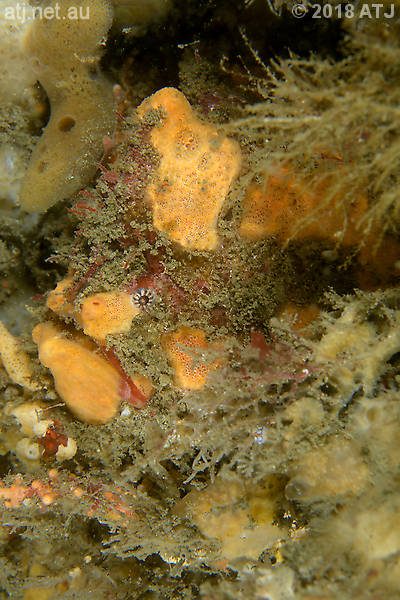
Red-fingered anglerfish, Porophryne erythrodactylus. 9.7 m.

Red-fingered anglerfish, Porophryne erythrodactylus. 9.8 m.
I still had quite a bit of air and thought I'd go to the other side of the point and at least make it as far as the grey red-fingered anglerfish. I headed east and down past where the small orange red-fingered anglerfish had been. I had a look for the anglerfish on the way through but couldn't find it.
I swam along the NW-SE wall as far as the grey red-fingered anglerfish. It was still in the same spot it has been for the last few weeks.
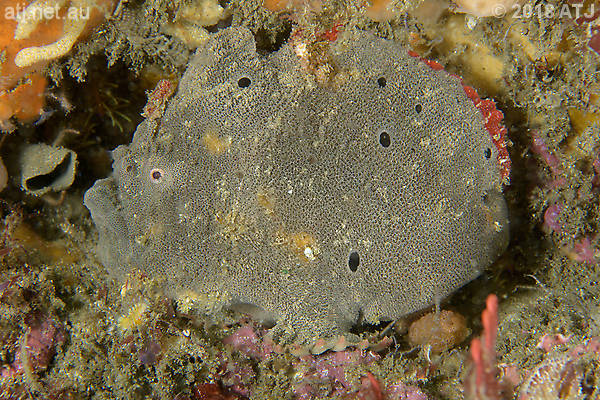
Red-fingered anglerfish, Porophryne erythrodactylus. 11 m.
I turned at this point and headed back the way I'd come. I headed along the NW-SE wall and up over past the large Carijoa covered rock. I had another look for the pygmy pipehorses at the end of the East-West Wall but still could not find them.
I headed west along the East-West Wall. I slowed down in the area where I have seen "Sandy" before and had another look for her. I could not find her.
I also looked for the yellowish White's seahorse without much luck. I did find an eastern frogfish that was out in the open which is odd for this time of day. I suspect the poor viz and overcast conditions made it seem like evening.
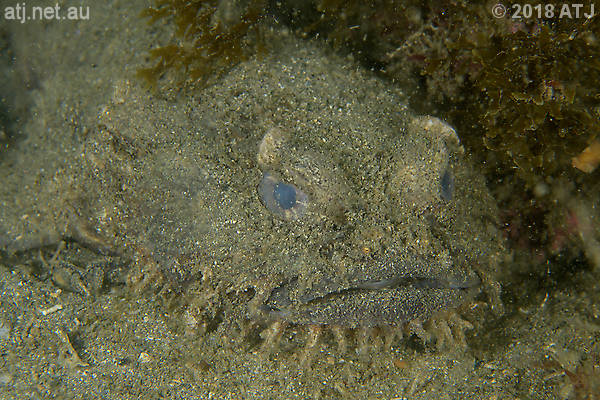
Eastern frogfish, Batrachomoeus dubius. 11.4 m.
I stopped again at the rock where the juvenile red painted anglerfish had been. I didn't find it but I did find a thornback cowfish.
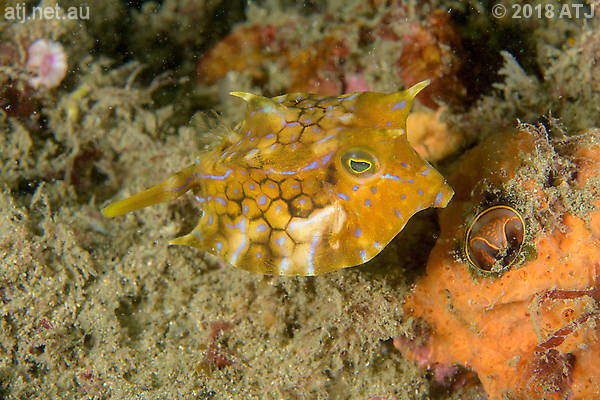
Thornback cowfish, Lactoria fornasini. 10.9 m.
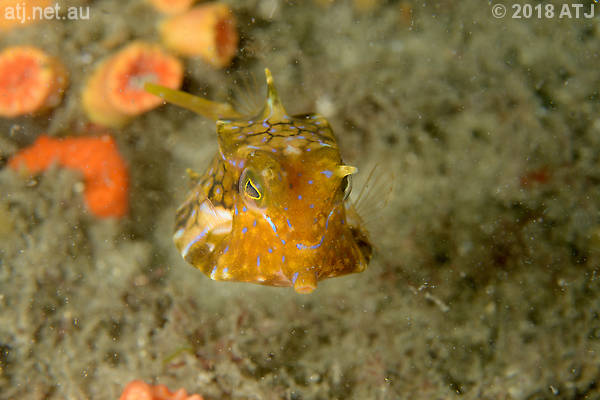
Thornback cowfish, Lactoria fornasini. 10.8 m.
I continued along the wall and came across a rock that matched John's description. I then spotted a pink female pygmy pipehorse. After taking photographs of her I looked for a male and found a pale yellow and pink one.
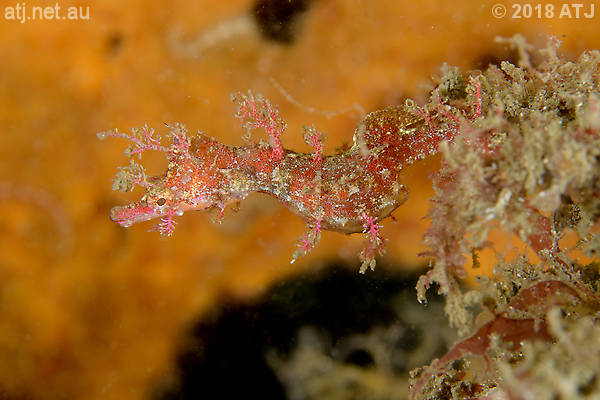
Female Sydney pygmy pipehorse, Idiotropiscis lumnitzeri, (IL2018101401). 10.6 m.

Female Sydney pygmy pipehorse, Idiotropiscis lumnitzeri, (IL2018101401). 10.6 m.
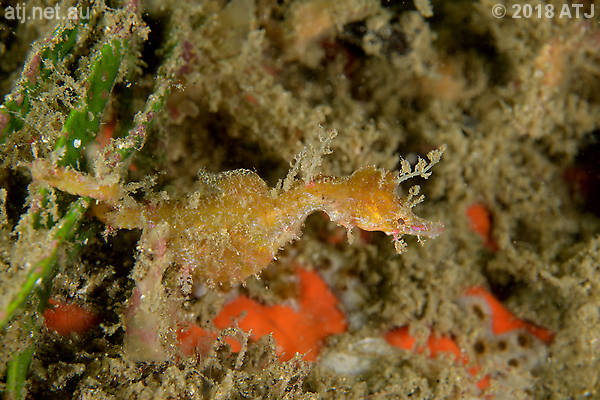
Male Sydney pygmy pipehorse, Idiotropiscis lumnitzeri, (IL2018101402). 10.9 m.

Male Sydney pygmy pipehorse, Idiotropiscis lumnitzeri, (IL2018101402). 11 m.
I followed the wall all the way to the basket star and then headed up the wall and south towards the beach.
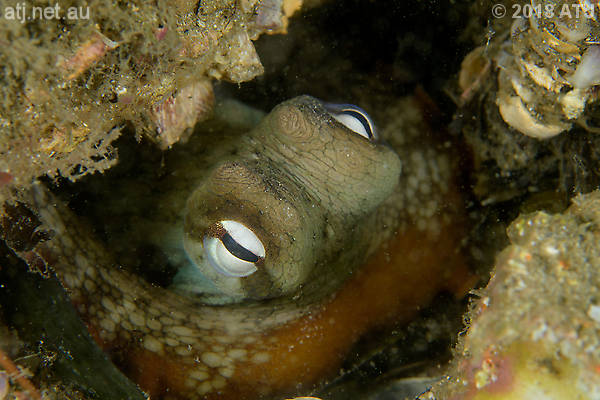
Common Sydney octopus, Octopus tetricus. 10.6 m.
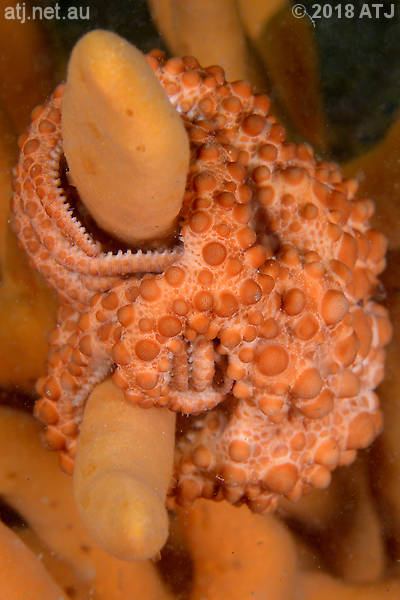
Basket star, Astrosierra amblyconus. 10.4 m.
I continued swimming south doing my safety stop as I swam until it was too shallow when I stood up and waded out.
Camera gear
Camera
Nikon D500
Lens
Nikon AF-S Micro Nikkor 60mm f/2.8G ED
Housing
Ikelite 6812.5
Lens port
Ikelite Flat Port 5502.41
Strobe
2 x Ikelite SubStrobe DS161